Have you ever noticed how the worst mishaps seem to happen when you least expect them? That’s because the best time to prepare for the next road trip mishap is before you travel. Here is what to pack in your complete car survival kit, plus road trip tips to survive anything Mother Nature throws at you.
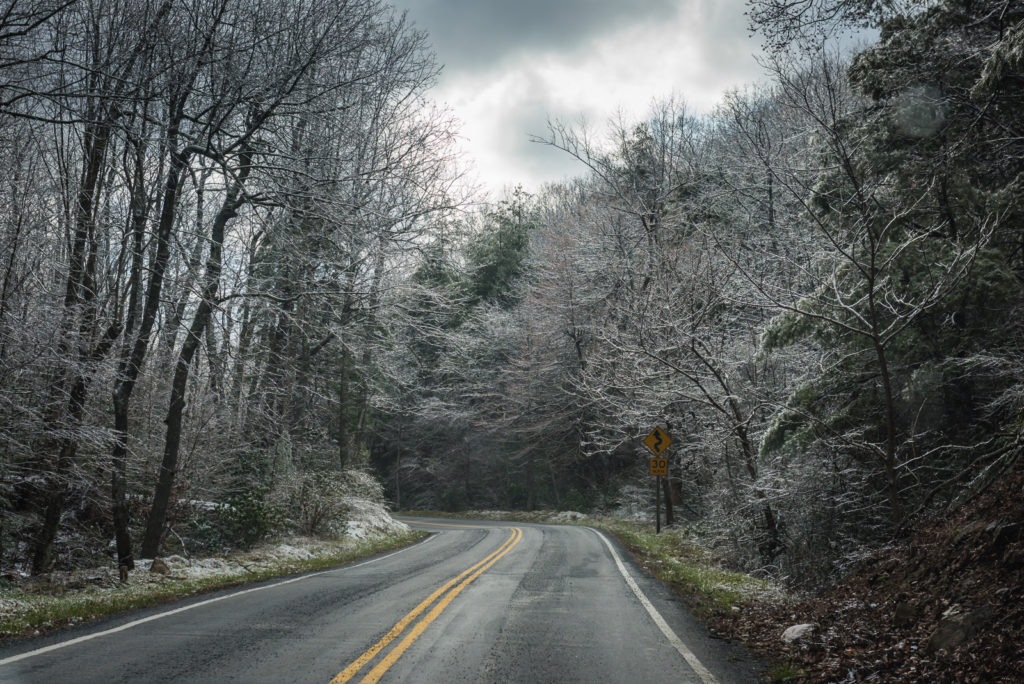
Prepare for any Roadside Emergency
Before any ambitious road trip, like our US Route 6 Cross Country Trip or this Boston to Bar Harbor road trip from We3Travel.com, consider signing up for a class and do check out Porch’s tips for planning the perfect road trip.
You can learn First Aid or even how to drive off-road or in the most challenging winter conditions. Here are some of the best resources for taking your driving skills and emergency preparedness to the next level:
- The American Red Cross offers First Aid and Disaster Training classes online and at local chapters.
- FirstAidWeb – self-guided online CPR and First Aid courses.
- Online state-certified defensive driving courses reduce points and insurance costs.
- Compare state laws and sign up for AAA Defensive Driving and Safety classes.
- AARP Smart Driver Course (for drivers 50+) covers defensive driving and the latest auto technology.
- “Learn to Anticipate” at Defensive Driving Academy.
- Advanced Driving courses go beyond defensive driving, while familiarization courses instruct visitors to the USA (or Americans/Canadians visiting other countries.)
- Bridgestone Winter Driving School in Steamboat Springs, CO runs programs for everyday drivers and pros.
- Find out how to handle rough terrain at the Jeep Off-Road Driving Academy located at the Nemacolin Woodlands Resort in Western Pennsylvania or at the Land Rover Experience in Manchester VT.
Plan for the Unexpected Emergency
- Always let a friend or family member know where you are going when traveling beyond your usual routes.
- Roadside Assistance Services are available from a variety of clubs such as AAA or Allstate Motor Club, and even as a credit card benefit.
- Call up roadside assistance on Honk, a free app, no membership is required. Available nationwide, with 15 – 30 minute ETAs on average, and prices $49+.
- Hedge your bets with travel insurance from Allianz or InsureMyTrip.com.
- And if you’re going to travel in a rental with family, consult this guide for renting a car with kids.
Prepare Your Car for a Road Trip
Get a car check-up, perform your own basic car tune-up, make sure to have a spare tire, and consider these RV upgrades:
- Ensure all fluids–including oil, anti-freeze, and windshield washer reservoir– are clean and full. Verify that the oil is the right one for anticipated conditions, and that windshield washer fluid contains deicer in winter.
- Test windshield wipers for smearing.
- Check tire pressure and tread, and ascertain that you have the right tires for anticipated conditions. Some wintry areas may require studded tires or chains. (Note-be sure to switch out winter tires if headed to a warm climate.)
- If the battery is 3-5 years old, get it checked.
- If your brakes exhibit any of these 5 signs, get them tested.
Use Weather Apps to Monitor Road Conditions
Check weather reports on your preferred media before you hit the road, and along the way with these weather apps (free for both iOS and Android, except where noted):
- Weather Channel – Breaking news, hourly and 10-day forecasts, personal weather reports, videos, ski conditions, and much more.
- Weather Underground – Weather Advisory alerts, finger-friendly WunderMap, hyper-local reports, day/hour and 10-day forecasts, plus filter options for US Fronts, Hurricanes, Active Fires, etc.
- WeatherBug – GPS localized, Spark™ lightning detector (monitor specific locations with radar map, severe weather alerts and National Weather Service warnings with push notifications, weather and traffic cams, interactive maps, and extended 10-Day forecasts.
- NOAA Radar (Free and Hi-Def versions) – the latest information from the National Oceanic and Atmospheric Administration including hurricanes and tropical storms, extended forecasts, and extreme weather notifications.
Navigate with Traffic Apps
- Sigalert.com – provides roadside traffic cameras, real-time road speeds, and round-the-clock traffic reports for 75 metropolitan areas.
- Waze – community-sourced, it’s been described as “like Foursquare but for driving” with extremely accurate real-time driving directions, maps, and traffic reports.
Avoid Dangerous Road Hazards
The safest way to handle extreme weather on the road is to not experience it at all. Find the nearest lodging on your favorite hotel booking app and get some shuteye before getting back on the road.
Car Survival Kit Packing List
Because you never know when you’re going to need a lifeline, never leave home without a fully charged cellphone–preferably a smartphone with all the apps listed above. If you’re heading out for more than a short distance, pack an extra battery pack. Options range from the cheap Astro Mini to the bulky, yet powerful, RavPower external battery.
Consider renting or buying a satellite phone if heading to regions with spotty cellphone coverage. We’re partial to the tiny but mighty Garmin inReach Mini.
Purchase a car survival kit with all the bells & whistles, or pack your own so that you can keep a kit in the trunk:
- Water (Enough for the #of passengers/length of trip)
- High-energy, non-perishable foods (nuts, tuna cans, granola bars) with an extended shelf life
- Blanket
- Air Compressor/Tire Inflator
- Tire Gauge
- Battery Jumper Cable
- Emergency Warning Triangle
- Road Flares
- Flashlight and/or Headlamp with extra batteries
- Duct Tape
- Matches
- Work Gloves
- Emergency Rain Poncho
- Whistle
- Bungee Cords
- Cable Ties
- Duct Tape
- Utility Knife
- Portable Radio (with spare batteries)
- Tow rope
- Reflective Triangle
- Fire Extinguisher
- Nylon cord
- Flagging tape
- Toilet Paper
- Seatbelt Cutter/Window Escape Hammer
Order a First Aid Kit or create your own:
- Disposable non-latex gloves
- 1 breathing barrier (with one-way valve)
- Tweezers
- Oral thermometer (non-mercury/nonglass)
- Scissors
- Hand-sanitizer
- 1 instant cold compress
- Emergency Mylar Blankets
- Bandaids, Larger Bandages, Cloth Tape, Antiseptic Wipes, Neosporin, Moleskin
- Aspirin and Advil (or preferred pain reliever)
- Benadryl
- Hydrocortisone ointment packets
- Personal Medications (Consider carrying a small stash of rescue medications for chronic diseases such as an Asthma Inhaler and Oral Steroids for those prone to asthma attacks.)
- Children’s version of medications, if traveling with kids.
- First aid instruction booklet
And last, but not least, FamilyHandyman.com has some brilliant ideas for making your own winter car survival kit.
How to Drive In Hazardous Conditions
New York State posts detailed instructions covering special driving conditions from how to drive in winter to how to avoid collisions with deer. Here are tips for handling some of the most difficult road hazards.
Get through heavy rain, fog, wildfires, smoke, and any other situation that lowers visibility.
- Drive with lights on low beam (some states require headlights in rain, and daytime running lights don’t count.)
- Open your window to listen for traffic you can’t see.
- Switching on defrost (without heat and/or open window to speed up window defog.)
- Reduce distractions; turn off the radio and cell phone.
- Use the right edge of the road or road markers as a guide.
- Drive cautiously: slow down (high speeds and/or worn tires can result in hydroplaning,) signal turns well in advance, and brake early.
- Do not stop on the side of the road if it’s busy. Signal, pull off as far as possible, and turn on hazard lights.
What to Do When Lightening Strikes
- An enclosed metal vehicle–with all doors closed and windows rolled up–is relatively safe, but NOT any open or soft top vehicle.
- Pull off the road as a lightning flash can cause temporary blindness.
Be Wary of Floods
- Avoid driving through water, as little as six inches can cause you to lose control while two feet will carry away most cars.
- Don’t drive through standing water if you see fallen power lines or electric wires nearby.
- If a power line or electric wire falls on your car, drive away from the wire. But don’t turn off the ignition, even if the engine stalls. Stay in your car and wait for emergency workers. Don’t let anyone other than emergency workers near your vehicle.
Survive Being Stuck in a Car in Snow
In addition to all-purpose roadside emergency kits, a few extra items may be useful in winter when you might encounter snow and ice:
- Ice scraper and snow brush
- Shovel
- Tire chains (where allowed or required)
- Rock salt, kitty litter, or sand (for extra traction)
- Wear warm clothing and boots (pack a change of clothing, including extra winter coat, mittens, and cap.)
- Colander to strain snow, a car kettle to warm it, and a large bowl to collect warmed water. Don’t drink cold water or snow!
- Chemical hand and body warmer packets
If stuck in snow:
- Conserve gas, but keep the car warm by turning on the engine every 15-20 minutes.
- Make sure the tailpipe is clear to avoid carbon monoxide poisoning.
- Stay warm by wrapping up in extra clothes and blankets and moving often.
- Hydrate with warmed water (your body can’t afford to lose heat on cold water or snow.)
- Extreme cold can reduce cellphone battery life, keep cell phones close to the body and limit use to stay connected.
Driving into the Desert
In addition to emergency car kits, increase your drinking water supplies if heading into the desert or in extreme heat conditions. Plan to have 2-3 liters of water per person, per day. 2-gallon water jugs with spigots are handy, as are refillable dromedaries. And keep one or more windshield sun shades in road kits as they can help keep parked cars cool. Regardless, NEVER leave pets or children unattended.
Keep in mind that cell reception in deserts is spotty at best. Gas stations are few and far between, so top off fuel tanks when you can, and pack more emergency supplies than you think you will need.
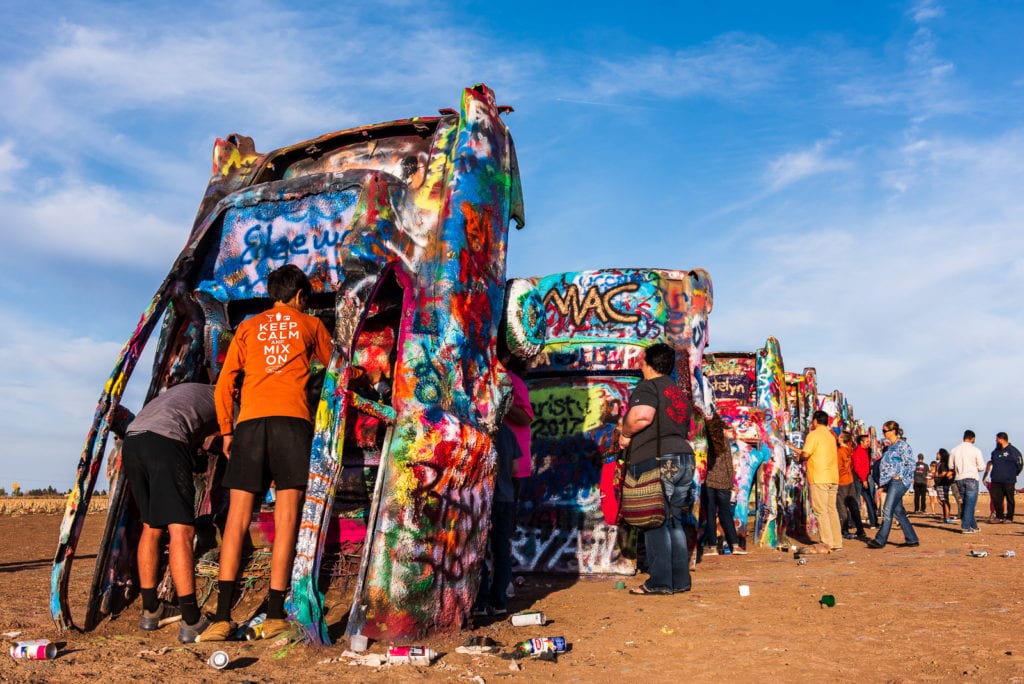
Don’t Try to Outrun a Tornado!
If you see signs of an approaching storm or you get a tornado alert, stop your vehicle. Don’t try to outrun a tornado and don’t park or hide under an overpass (winds are faster there.) Because motor vehicles are easily tossed by high winds, it’s best to abandon them. That’s your best course of action unless the roadway is the lowest ground you can get to. If that’s the case, buckle up, lower your head below the windows, and cover up with a blanket if available.
If you can safely get below road level, leave your vehicle and lie low, protecting your head as best as possible.
Brake for Earthquakes
If you feel an earthquake or you get an alert, stop the car as quickly and safely as possible. Park away from utility poles, overhead wires, and under or overpasses. Set the parking brake and stay in the car, monitoring the radio or cellphone for emergency broadcasts. If a power line falls on the car, remain in the vehicle until a trained person removes the wire.
Romantic Road Trips:
Are you ready for a road trip? We’ve got you covered with road trip travel guides, plus weekend getaway ideas all over the US.
- Prince Edward Road Trip For First Timers
- Nova Scotia Road Trip For Adventurous Romantics
- Drive Cross Country On US Route 6
- A Delightful Connecticut Coast Scenic Drive Itinerary

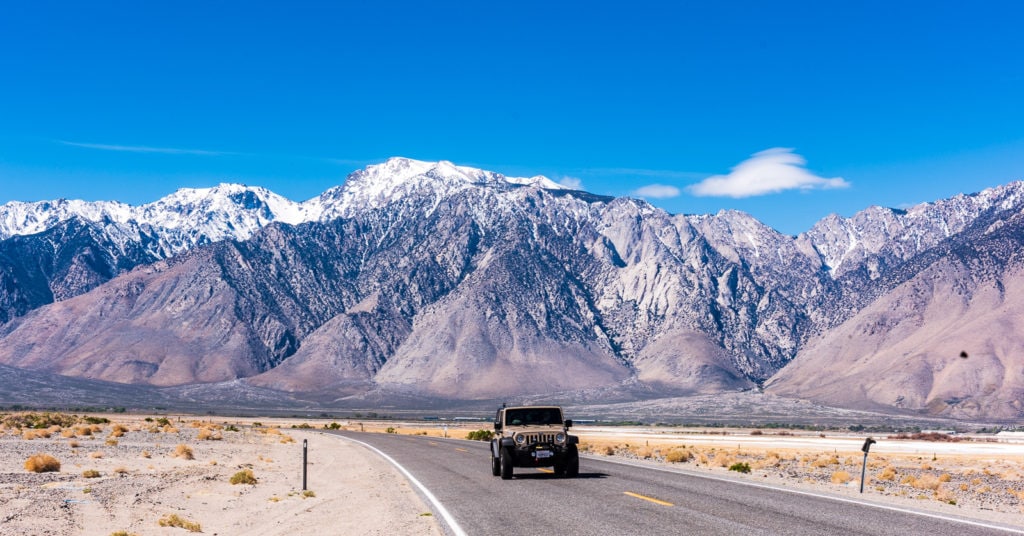
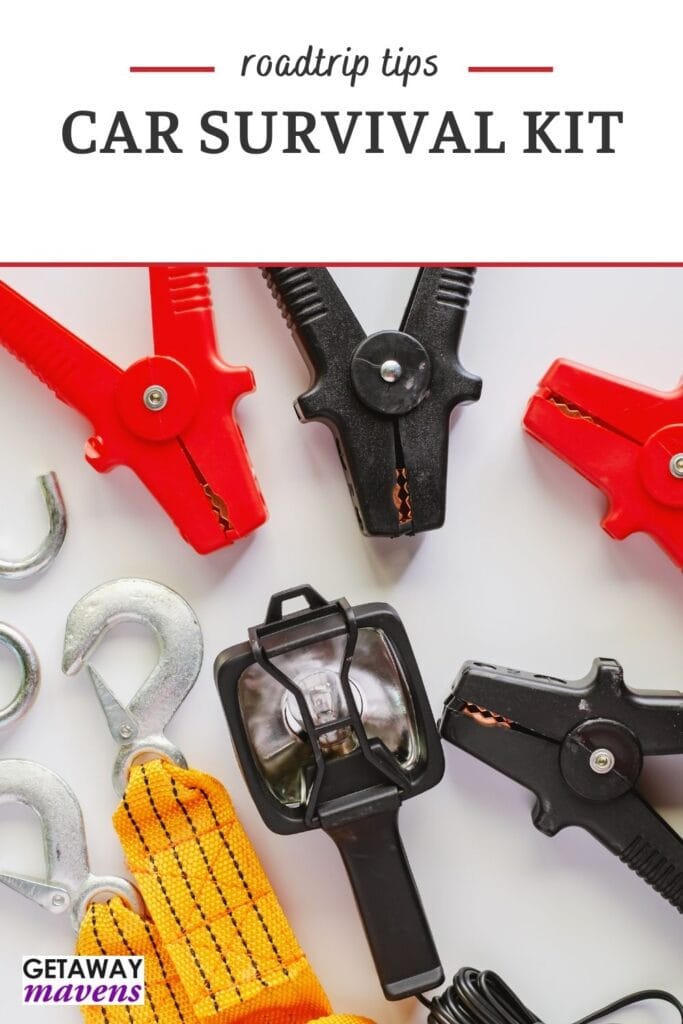
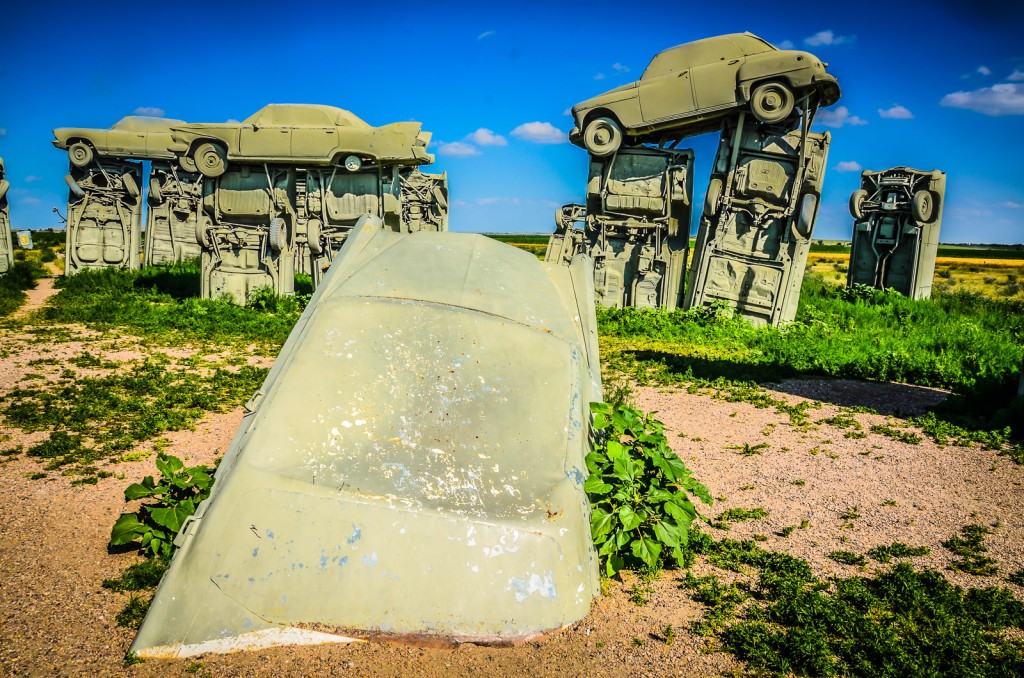
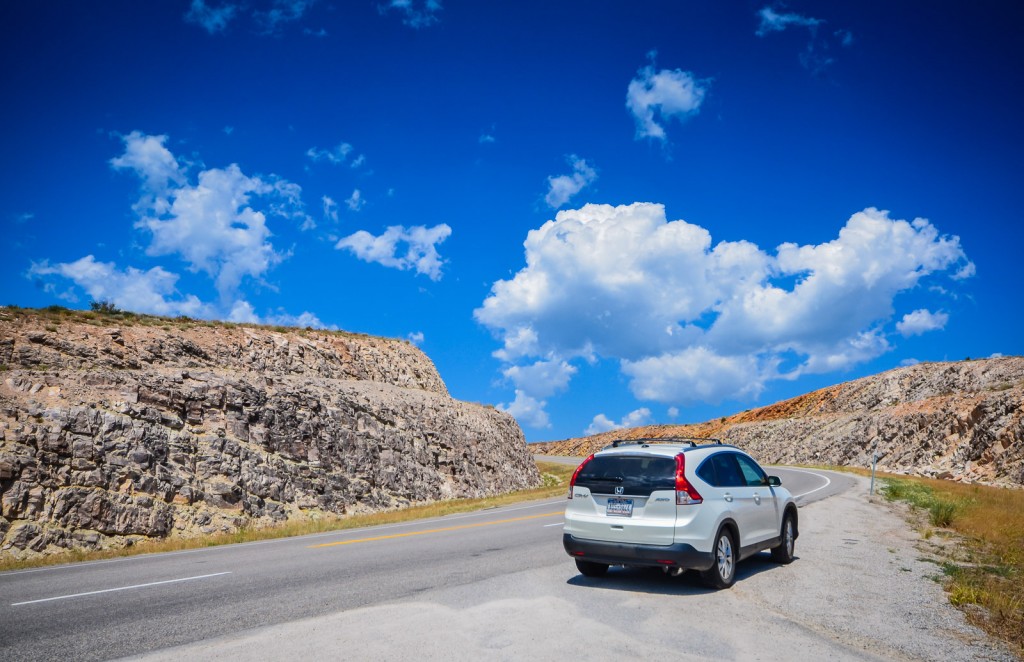
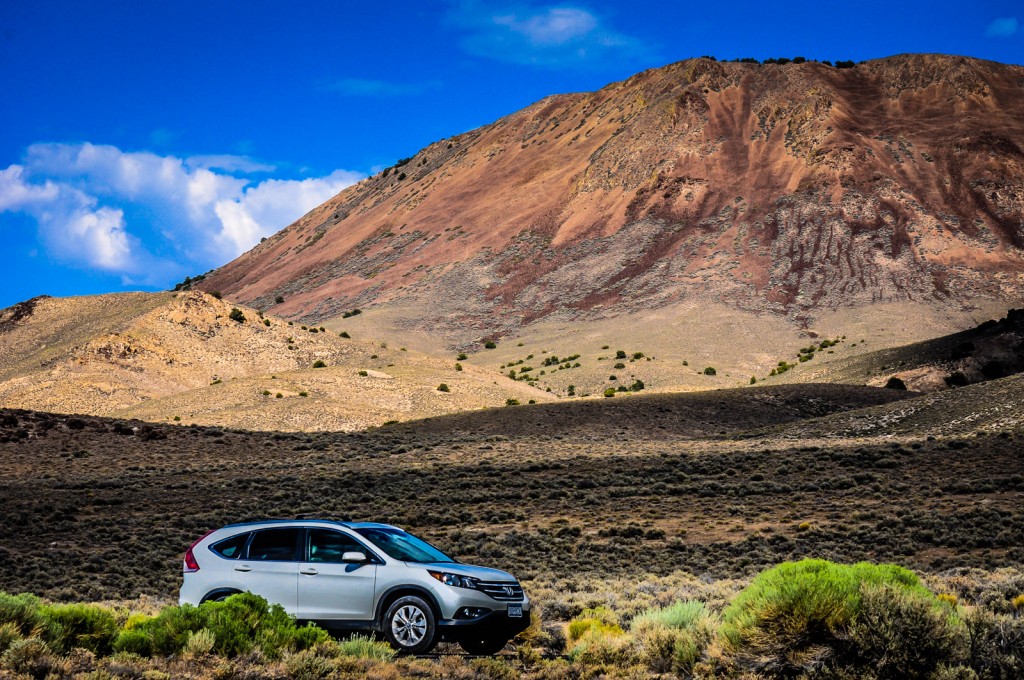
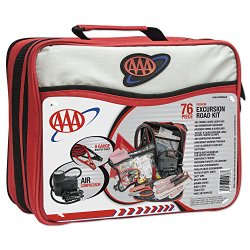

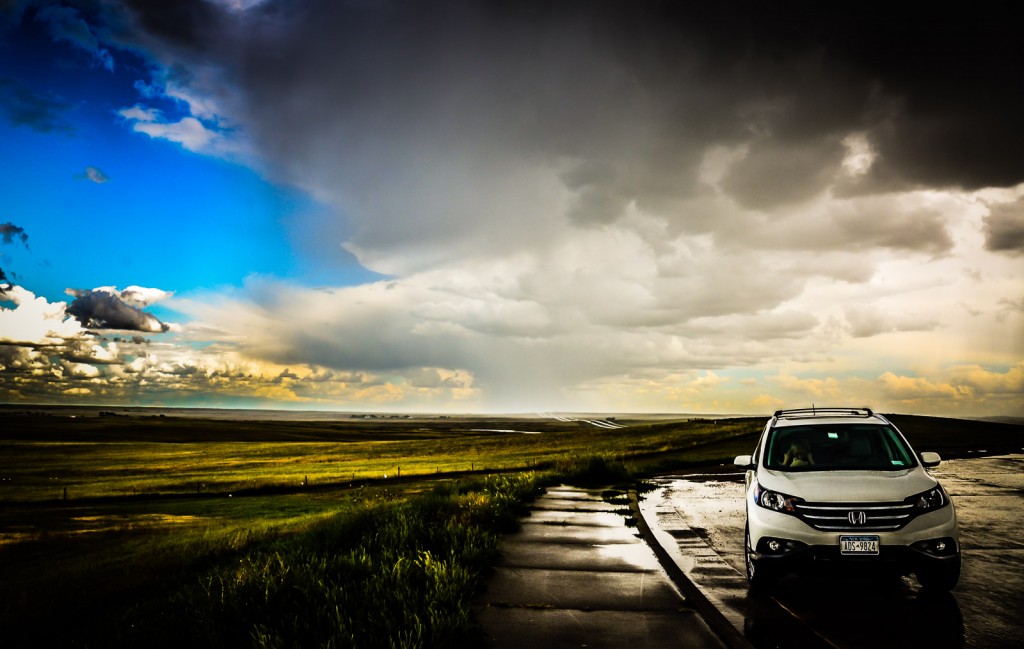
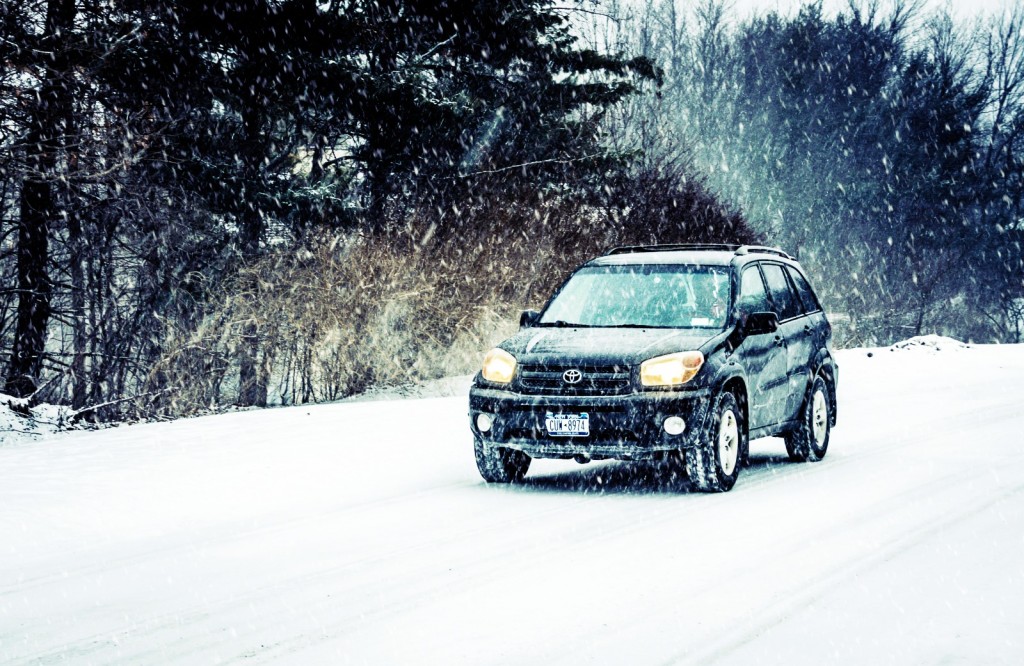
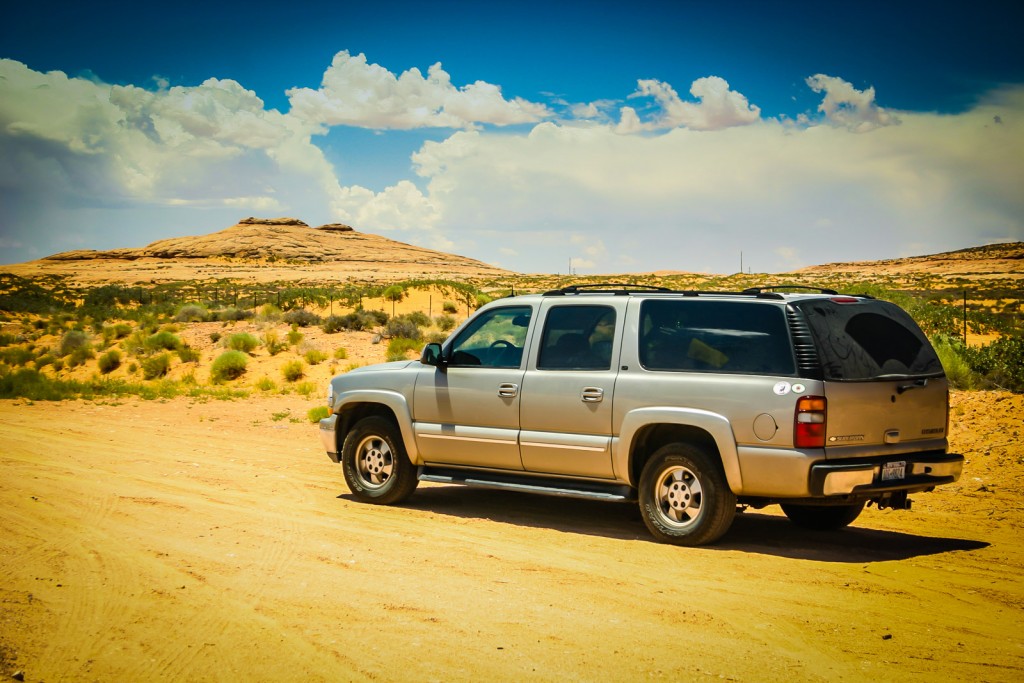

The article highlights the importance of having a car survival kit for safe and prepared driving, especially in remote locations or extreme weather. It provides a comprehensive list of essential items and emphasizes the importance of regular checkups to ensure all items are up-to-date. Thanks for sharing!